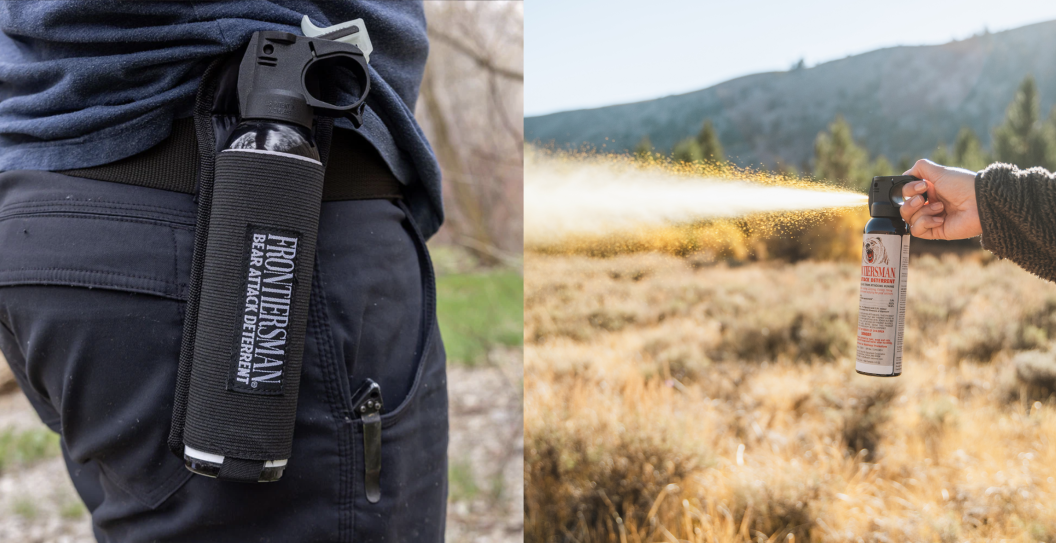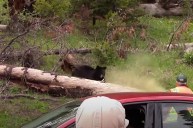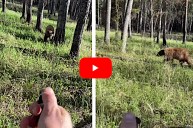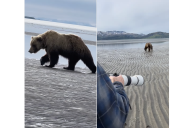As more and more people wander into bear country, human-bear encounters will happen more often, which is not good for either party. Commercial pepper sprays formulated specifically for bear deterrent can offer great peace of mind in these instances, and the sprays have become so popular, many national parks like Yellowstone now offer bear spray rentals to smart tourists.
To better understand how bear spray works, we talked to David Nance, CEO of Security Equipment Corporation, also known as SABRE, a manufacturer of personal protection sprays aimed to deter both humans and bears. It turns out the science of bear defense is fascinating stuff.
What is Bear Repellent?
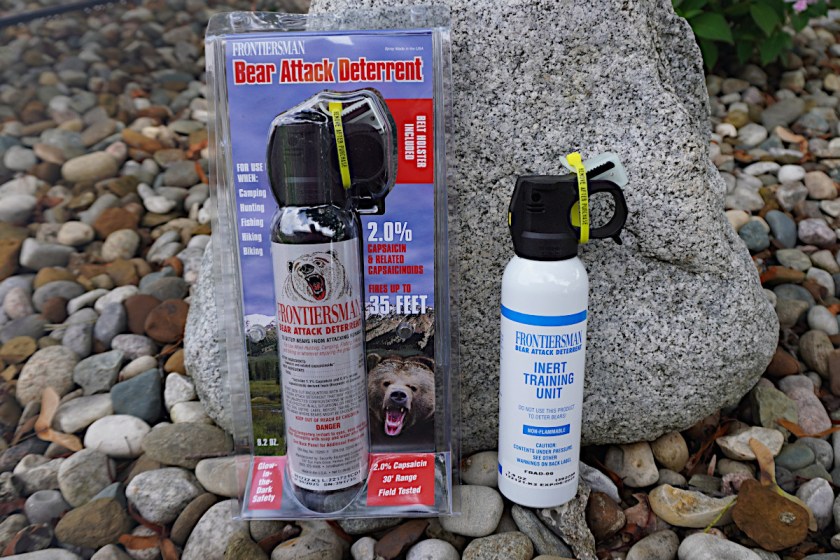
Travis Smola
SABRE, originally founded in 1975, was built on small canisters of consumer-grade self-defense pepper sprays intended for humans.
The idea of using these sprays as bear repellent didn't originate until the 1980s when the first capsaicin bear sprays were developed at the University of Montana. Nance notes that the idea really took off in the mid-1990s as more people started getting outside for recreation. It was unfortunate timing, because the surge of interest in America's wild places coincided with bear numbers starting to rebound under new conservation practices. In a way, it's surprising the use of bear spray wasn't developed sooner, because it is such a simple concept.
"The animals have eyes, and they breathe oxygen just like we do," Nance said. "If you slam those eyes shut, cause upper respiratory distress and irritation, they don't like that. They panic, they don't know what it is, and they leave."
SABRE's early bear sprays were tested in Alaska, which helped their product receive official registration with the Environmental Protection Agency (EPA), a requirement for today's modern bear defense sprays. After laboratory testing proved these cans could be effective during an aggressive bear encounter, a new industry was born, one that only seems to be growing each year as more people come in contact with animals in the wild.
Bear Spray vs Pepper Spray
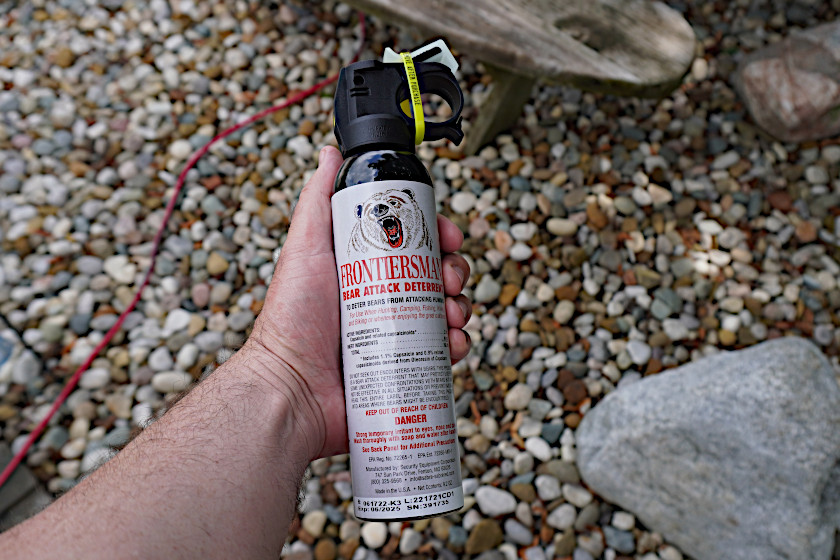
Travis Smola
One common misconception is that pepper spray is a good stand-in for bear repellent. However, Nance cautions this could be a big mistake, because the two products are made for vastly different purposes, and those smaller pepper spray canisters are simply not up for the task of stopping a charging bear.
"You're not going to stop a bear with a keychain pepper spray that only sprays 10 feet," Nance said. "You want something that is labeled Bear Attack Deterrent. You also want something with an EPA registration number to show that it's actually been approved by the EPA and is safe to use."
SABRE's can of bear spray has a maximum range of 35 feet to keep more distance between you and a charging animal. However, it's not just range, it's also the active ingredients that are much stronger in bear sprays than in pepper spray. SABRE uses the maximum strength allowed by the EPA.
"It's the major capsaicinoids that heat-bearing, pain-producing components which are 50 percent stronger in bear spray than they are in consumer sprays," Nance said. "To give you an idea, Tabasco sauce, for example, measures about 0.02 major capsaicinoids. It might cause a little sting to your tongue. Bear spray has 2.0 major capsaicinoids, making it a hundred times stronger than Tabasco."
The other big difference is the size and shape of the spray cloud itself. Modern bear sprays are designed to produce much larger clouds so there's a better chance of getting in the bear's eyes, nostrils, and throat. SABRE's products put out almost two ounces per second and cover a wide area. Because the cloud is so large, you don't need to be super accurate with it. He cited a recent black bear encounter that was caught on video where a hiker successfully deterred a curious bruin using the spray.
"The gentlemen did a nice job, he was very calm, he said 'Hey, bear,'" Nance said. "The bear was being playful at first and it got a little too close, [so] he gave it a little burst. The bear hit the cloud and turned around and ran the opposite way."
Nance notes the effectiveness of bear spray is very well documented. And while officials say no method is 100% effective, bear repellent has proven to be more effective than firearms in most scenarios.
"The U.S. Fish and Wildlife Service reported that bear spray is effective 92 percent of the time," Nance said.
How to Use Bear Spray Safely
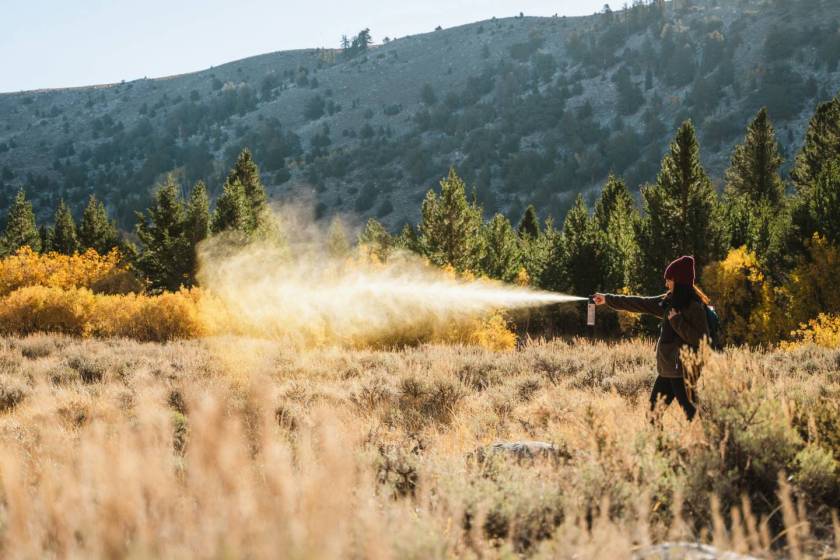
SABRE Frontiersman
Nance notes that about the only time a bear spray canister is ineffective is when it's in a pack or in some other unreachable place. That's why he's a huge advocate of always carrying it in a holster. SABRE sells a hip holster and an adapter for a chest holster. Either way, a can of bear repellent does the user no good if they cannot reach it in a hurry, especially if the bear encounter happens at close range.
That means practicing withdrawing the bear spray canister quickly from the bear spray holster and snapping off the safety clip. SABRE started making this component glow in the dark so a user can locate it after nightfall if a bear raids a camp.
"When you're in that scenario, that can be quite intimidating. And in an intense experience, fine motor skills are sometimes jeopardized," Nance said. "But if you have that muscle memory, it makes it much easier to do well under stress."
Once you have the canister out of the bear spray holster, there is some technique to making sure you get the spray to hit in the right location.
"A lot of people think you spray it perpendicularly at a 90-degree angle when you're standing straight up. The problem with that is if you're pretty tall, you might go right over the bear's head with it," Nance said. "So, you really want to go more at what I'd say is a 30- to 45-degree angle. Our recommendation is a two-second burst. Let the bear hit that cloud, and then if it keeps coming, use your one-second burst and at that 45-degree angle you should be able to go at their face and be in pretty good shape and give yourself an opportunity to escape."
Nance said a standard 9.2-ounce bear repellent container is good for about five full one-second bursts. Try to stay upwind, but spray anyway.
"If you're downwind and you get a little bit on you, the best thing you can do is clear your eyes, remain calm, and slow [your] breathing. If you see it coming at you, close your eyes so you don't get any in your eyes," Nance said. "Be conscious of your wind, but if you've got a bear charging at you, you're going to want to spray that thing no matter what."
Does Bear Repellent Expire?
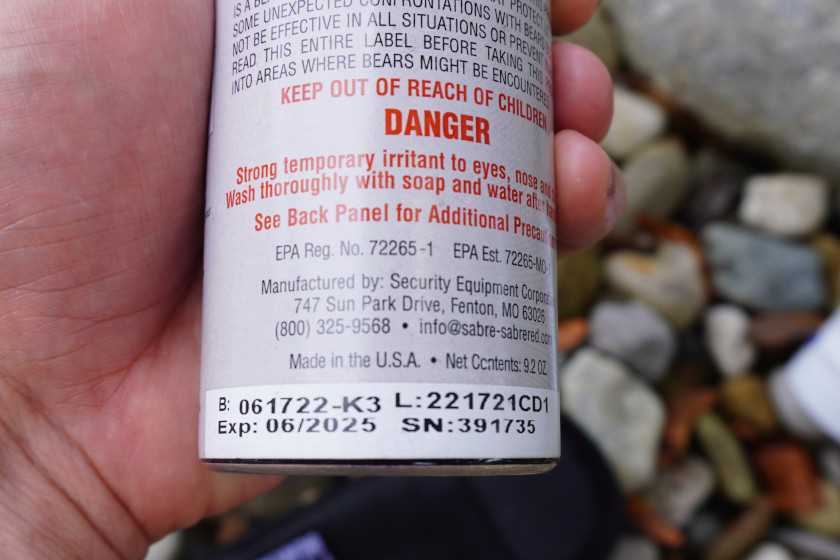
Travis Smola
It's important to monitor the expiration date on your can of bear spray. Otherwise, you could have a dangerous surprise when the spray fails to deploy. Bear spray expires after about three years due to a natural loss of propellent over time. The effectiveness of the spray can also be lessened if the can gets banged around a lot or if it is exposed to extremely high and low temperatures. Nance said the spray itself doesn't lose potency, it's the propellent inside the canister that eventually breaks down and causes the contents to lose range.
"Any sort of pressurized container, due to atmospheric pressure, wear and tear, cold and warm weather, things of that nature, getting knocked around by who knows what when you're in the outdoors a lot, can lose pressure," Nance said.
He suggested always keeping bear spray stored at room temperature. Cold temperatures below 32 degrees will cause the can to lose pressure. On the other end of the spectrum, high temperatures of 120 degrees Fahrenheit could cause a can to blow up, which is why one should never store a can inside a vehicle during the summer months.
He also notes that if you are planning to fly to bear country, you will need to buy your bear spray on location or have it shipped there. Bear spray is not allowed on airplanes, in either carry on or checked luggage. If you are driving, he recommends leaving the spray in the package until you reach your destination and then removing the clearly marked safety tag. You won't be able to remove the safety tab unless you cut it off.
Why Do Bears Attack?
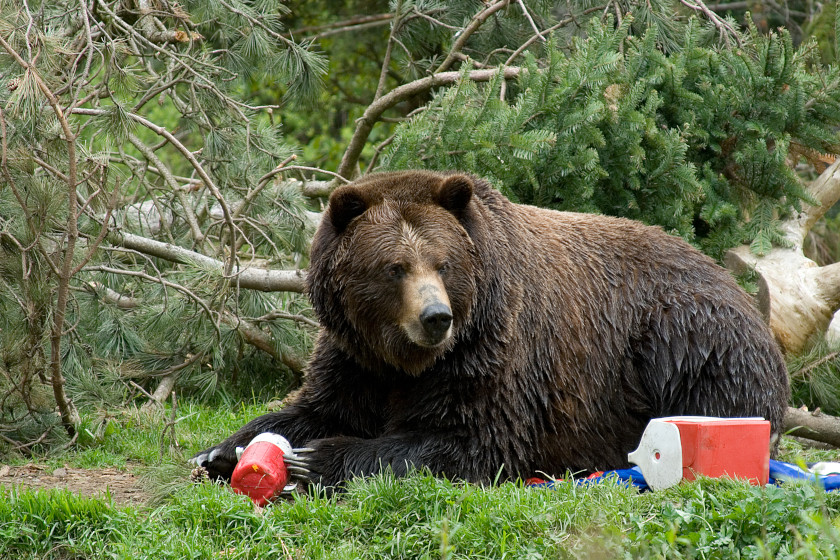
Getty Images: roundhill
Nance said there's only a few reasons why bears will attack humans. The most common encounter is when a human surprises a bear that doesn't hear the person coming. The bear lashes out in self-defense. The second is when a mother bear is protecting her cubs, a contributing factor in many fatal grizzly bear attacks.
"If you get close to a bear's cub, that's really bad," Nance said. "that's probably when they're the most violent."
Sometimes bears will also attack if a human approaches too close to their food and the bear thinks the person is going to steal it.
The final and rarest reason a bear might attack is simply because the animal is hungry and decides the human is prey. Nance believes most encounters likely involve food, which is why campers would be wise to invest in scent-proof food containers that can be hung at least 100 yards away from a campsite.
Another good idea is to always enter bear country in groups. There is safety in numbers and a bear is more likely to hear your conversations and leave the area without you even knowing they're there. While bear bells also work well, SABRE has also developed a loud bear horn that serves the same purpose. He recommends giving the horn a blast every seven to ten minutes. The purpose of the horn is not to deter a charging bear attack, but to simply let bears know you are in the area.
"This bear horn is not going to deter an attacking bear, it's designed to prevent startling a bear when they're right up on you," he said. "If they hear this sound when you're further away and they don't see you, they go in the opposite direction. But if it's coming at you and it's determined, you need to have bear spray."
Making one's presence known in nature is probably the best defense against unwanted bear encounters. Otherwise, bear spray is the best non-lethal solution to ensuring both human and animal walk away from an encounter unscathed.
"At the end of the day, unless you're actually hunting black bear, chances are you're in bear country not intending to kill the bear. If you use bear spray, the bear's going to be all right," Nance said.
SABRE's popular Frontiersman are available from major U.S. retailers like Bass Pro Shops, Cabela's, Dunham's Walmart, and Amazon. Their Canadian bear spray is available at retailers like Mountain Equipment Co-Op, Canadian Tire, and more. Visit the Sabre website for more information on their personal protection products.
